 The Paris Convention for the Protection of Industrial Property (known as the “Paris Convention”) regulates of what is commonly thought of as “intellectual” property. Its scope is expansive, as it addresses the protection of patents, trademarks, designs, trade names, geographical indications. It also provides for the protection of state emblems of other countries, armorial bearings, flags, other emblems, abbreviations and names that are already the subject of other international treaties. The Convention was signed in Paris in 1883 by 11 states initially and was ratified the following year. The signatory countries formed themselves into a “Union” of patenting authorities, and are still sometimes referred to as the “Paris Union.” The United States joined the Paris Convention in 1887. Since then, the Convention has been revised a number of times. Currently, the World Intellectual Property Organization (WIPO) web site lists 174 contracting parties to the Paris Convention.
The Paris Convention for the Protection of Industrial Property (known as the “Paris Convention”) regulates of what is commonly thought of as “intellectual” property. Its scope is expansive, as it addresses the protection of patents, trademarks, designs, trade names, geographical indications. It also provides for the protection of state emblems of other countries, armorial bearings, flags, other emblems, abbreviations and names that are already the subject of other international treaties. The Convention was signed in Paris in 1883 by 11 states initially and was ratified the following year. The signatory countries formed themselves into a “Union” of patenting authorities, and are still sometimes referred to as the “Paris Union.” The United States joined the Paris Convention in 1887. Since then, the Convention has been revised a number of times. Currently, the World Intellectual Property Organization (WIPO) web site lists 174 contracting parties to the Paris Convention.
As a member of the Paris Convention, the United States adheres to Article 6ter, entitled:”Marks: Prohibitions concerning State Emblems, Official Hallmarks, and Emblems of Intergovernmental Organizations.” Under Article 6ter, as revised at Stockholm on July 14, 1967, the signatory countries should refuse or invalidate the registration, and prohibit the unauthorized use, either as trademarks or as elements of trademarks, of armorial bearings, flags, and other state emblems, of the member countries, official signs and hallmarks indicating control and warranty adopted by these countries, and any imitation from a heraldic point of view. Such protection extends to armorial bearings, flags, other emblems, abbreviations, and names, of international intergovernmental organizations of which one or more countries of the Union are members, not including armorial bearings, flags, other emblems, abbreviations, and names, which are already the subject of international agreements in force.
The member countries could communicate among each other, through the International Bureau (IB) of WIPO, the list of state emblems, and official signs and hallmarks indicating control and warranty, which they would like to protect. Only armorial bearings, flags, other emblems, abbreviations, and names, of international intergovernmental organizations, to which no objections have been made, will be protected under Article 6ter. The period for transmitting such objections is twelve months from the receipt of the notification.
As noted by Professor G.H.C. Bodenhausen, Director of the United International Bureaux for Protection of Intellectual Property (BIRPI) from 1963 to 1970, although this Article relates to trademarks, “its purpose is not to regulate their protection as subjects of industrial property but rather to exclude them from becoming such subjects in certain circumstances.” Guide to the Application of the Paris Convention for the Protection of Industrial Property as Revised at Stockholm in 1967, p. 95, WIPO Publication N⁰611 (E).In the United States, the Paris Convention is not self-executing and, therefore, its provisions have been implemented there by the enactment of national legislation. Sections 2(a) and 2(b) of the Lanham Act, which contains the federal rules governing trademark law in the United States, are the two basic provisions which bar registration of marks comprised in whole or in part of designations notified pursuant to Article 6ter and to which the United States has transmitted no objections:
“No trademark by which the goods of the applicant may be distinguished from the goods of others shall be refused registration on the principal register on account of its nature unless it—
(a) Consists of or comprises immoral, deceptive, or scandalous matter; or matter which may disparage or falsely suggest a connection with persons, living or dead, institutions, beliefs, or national symbols, or bring them into contempt, or disrepute; or a geographical indication which, when used on or in connection with wines or spirits, identifies a place other than the origin of the goods and is first used on or in connection with wines or spirits by the applicant on or after one year after the date on which the WTO Agreement (as defined in section 2(9) of the Uruguay Round Agreements Act [19 USC §3501(9)]) enters into force with respect to the United States.
(b) Consists of or comprises the flag or coat of arms or other insignia of the United States, or of any State or municipality, or of any foreign nation, or any simulation thereof.”
The US Trademark Manual of Examining Procedure (TMEP), Chapter 1200, § 1205.02 further outlines how the provisions of Article 6ter work, i.e., “each member country or international intergovernmental organization (IGO) may communicate armorial bearings, emblems, official signs and hallmarks indicating warranty and control, and names and abbreviations of IGOs to the International Bureau (IB) of WIPO, which communications will then be passed on to the other member countries. Within twelve months from receipt of the notification, a member country may transmit its objections, through the IB. When the United States 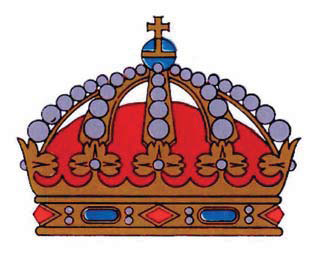 Patent and Trademark Office (USPTO) receives notifications under Article 6ter from the IB, they are assigned serial numbers in the “89” series code, i.e., serial numbers beginning with the digits “89,” and are sometimes referred to as ‘non-registrations.’” This database is searched by the USPTO examining attorneys during the initial examination of new applications for trademark registration. Here are some examples from the “89” series code online database of the USPTO:
Patent and Trademark Office (USPTO) receives notifications under Article 6ter from the IB, they are assigned serial numbers in the “89” series code, i.e., serial numbers beginning with the digits “89,” and are sometimes referred to as ‘non-registrations.’” This database is searched by the USPTO examining attorneys during the initial examination of new applications for trademark registration. Here are some examples from the “89” series code online database of the USPTO:
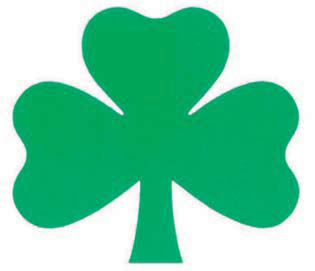 Serial No.: 89/001124 in the name of the Government of Sweden; the mark consists of the royal crown of Sweden.
Serial No.: 89/001124 in the name of the Government of Sweden; the mark consists of the royal crown of Sweden.
Serial No.: 89/001094 in the name of the Government of Ireland; the mark consists of the Shamrock symbol in its various forms as used by the State of Ireland.
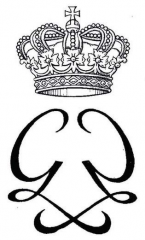 Serial No.: 89/000606 in the name of the Government of the Principality of Monaco; the mark consists of the Coat-of-Arms of the monogram of H.S.H. The Princess Grace of Monaco.
Serial No.: 89/000606 in the name of the Government of the Principality of Monaco; the mark consists of the Coat-of-Arms of the monogram of H.S.H. The Princess Grace of Monaco.
In order to be applied with respect to national symbols, Section 2(a) requires additional matter, such as disparagement or a false suggestion of a connection, to preclude registration. But Section 2(b) prohibits the registration of any mark that contains a flag, coat of arms, or insignia of the United States, of any state or municipality or of any foreign nation, or any simulation thereof. A refusal must be issued by the trademark examining attorney if the design would be perceived by the public as a flag, whether or not other matter appears with or on the flag. Here is a relatively recent example of how this works:
On November 17, 2009, Extreme Fight Games Inc., a California Corporation, filed an application for registration of the mark EXTREME FIGHT GAMES and Design, 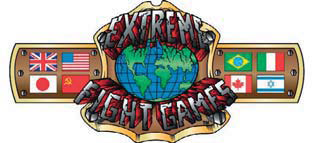 Serial No. 77/874229 for use in connection with “board games.” In her first Office Action, the examining attorney issued a refusal to registration under Section 2(b) stating the following:
Serial No. 77/874229 for use in connection with “board games.” In her first Office Action, the examining attorney issued a refusal to registration under Section 2(b) stating the following:
“Section 2(b) Refusal – Flags Registration is refused because the applied-for mark includes flags from Brazil, Italy, Canada, Israel, Great Britain, the United States, Japan, and the former Soviet Union. Trademark Act Section 2(b), 15 U.S.C. §1052(b); see TMEP §1204. Trademark Act Section 2(b) bars registration of marks that include the flag, coat of arms, or other insignia of the United States, any state or municipality, or any foreign nation. TMEP §1204
Flags and coats of arms of governments are designs that have been formally adopted to serve as emblems of governmental authority. U.S. Navy v. U.S. Mfg. Co., 2 USPQ2d 1254 (TTAB 1987); In re U.S. Dep’t of the Interior, 142 USPQ 506 (TTAB 1964); TMEP §1204.02(a).
It should be noted that Trademark Act Section 2(b) is an absolute bar to registration on the Principal and Supplemental Registers. Trademark Act Sections 2(b) and 23(a), (c), 15 U.S.C. §§1052(b), 1091(a), (c); see TMEP §§1204, 1204.04(a).”
Applicant did not respond to the Office Action and the application became abandoned.
In In re Peter S. Herrick, P.A., 91 USPQ2d 1505 (TTAB 2009),the applicant filed an appeal with the USPTO Trademark Trial and Appeal Board (TTAB)[1] from the examining attorney’s final refusal based on a finding that the applied-for mark was similar to the seal of a former government agency[2] .The TTAB issued a precedential decision affirming the examining attorney’s refusal to register applicant’s mark U.S. CUSTOMS SERVICE 1789 and Design for “attorney services” under Section 2(a) and Section 2(b).
The trademark examining attorney asserted that the applied-for-mark “falsely suggests a connection with United States Customs and Border Protection, formerly known as the United States Customs Service, an agency of the United States government.” The refusal under Section 2(b) was based on the contention that “applicant’s mark consists of or comprises a simulation of an insignia of the United Sates (i.e., the governmental insignia of the United States Customs Service and/or the United States Treasury).” Applicant tried to overcome the refusal under Section 2(a) by submitting arguments that its mark does not falsely suggest a connection with the U.S. Customs Service, because such entity no longer exists. In 2003 the U.S. Customs Service has merged into the Department of Homeland Security and its name changed to United States Customs and Border Protection. The TTAB, however, noted that the “United States Customs and Border Protection still refers to itself as the U.S. Customs Service as do members of the public.” Furthermore, the Board pointed out that “prior to becoming United States Customs and Border Protection, the United States Customs Service used a seal that is virtually identical to applicant’s mark,” except that applicant claims the colors blue, yellow and white as a feature of its mark and its mark contains the wording “U.S. CUSTOMS SERVICE” and the seal uses “UNITED STATES CUSTOMS SERVICE.”
The examining attorney’s refusal under Section 2(b) was based on the premise that “applicant’s mark is a simulation of the Department of Treasury seal.” The reason for bringing up the Department of Treasury Seal in the Section 2(b) refusal was the fact that the United States Customs Service was a division of the Department of Treasury, and not a government department itself, and therefore, its seal was not prohibited under Section 2(b). Comparing applicant’s mark to the government seal, the TTAB found that “with the exception of the words (The Department of the Treasury vs. U.S. Customs Service), they are virtually identical and that the average person upon seeing applicant’s mark would associate it with the Department of Treasury seal.” In its final determination on this issue, the Board held that “applicant’s mark consists of or comprises a simulation of an insignia of the United States thereby prohibiting registration.”
In another precedential decision issued recently by the TTAB, the Board held that Section 2(b) bars registration of a mark which “[c]onsists of or comprises the flag or coat of arms or other insignia of the United States, or of any state or municipality, or of any foreign nation or any simulation thereof” even when the applicant is a government entity applying to register its own flag, coat of arms, or other insignia. In re The Government of the District of Columbia, 101 USPQ2d 1588 (TTAB 2012).
The Government for the District of Columbia filed an application for registration of its seal,
Serial No. 77/643857,in connection with “Clocks; Cufflinks; Lapel pins; Tie tacks,”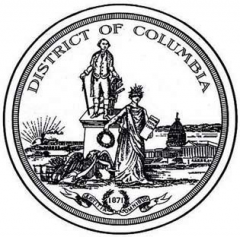
(International Class[IC] 014; “Desk sets; Holders for desk accessories; Holders for notepads; Memo pads; Notepads; Pen and pencil cases and boxes; Pencils; Pens,” IC 016; “Coasters not of paper and not being table linen; Cups and mugs,” IC 021; and “Hats; Polo shirts; Sweat pants; Sweat shirts; T-shirts,” IC 025. The examining attorney issued a final refusal of registration based on Section 2(b) of the Trademark Act asserting that such section “prohibits registration of official insignia, even by the relevant governmental entity.” The District of Columbia filed an ex parte appeal before the TTAB attempting to defend its right to registration by looking at the Congressional intent of Section 2(b). One of the applicant’s arguments was that the implementation of the Paris Convention was intended “to prevent others from registering the official insignia of governments, not to prevent these governments from registering their own insignia.” In its decision, the TTAB stated that “the Paris Convention is not self-executing, so we must look for authority to whatever provisions Congress has made in implementing the treaty, and the treaty itself creates no rights that can be directly relied upon by applicants in the United States.” The three-judge panel went on further stating that “even if the treaty were self-executing, the only relevant requirement in Article 6ter is that signatory states ‘refuse . . . the registration . . . without authorization by the competent authorities, . . . as trademarks, . . . armorial bearings, flags, and other State emblems . . . .’” The TTAB panel even turned to the USPTO’s TMEP, Section 1204.04 (a) (8th ed. 2011): “…The statute does not list any exceptions that would allow for countries, states, or municipalities to register their own flags or insignia. Applications for marks that contain flags, coat of arms, or government insignia, even if filed by the relevant state, country, or municipality, must be refused.” Finally, the three judge panel pointed out that “this case is not about what the law should be or what it might be, but what it is.” The Board suggested that applicant may have to address this matter legislatively; the TTAB “have no authority to change the words of the statute. “
Notwithstanding the foregoing, stylized flag designs are not refused under Section 2(b) and the mere presence of some significant elements of flags, such as stars and stripes (U.S. flag) or a maple leaf (Canadian flag) does not necessarily justify a refusal. Below are some examples of registered marks incorporating stylized representations of the U.S. flag and other prominent symbols.
Flags that are not presently in use as national flags (e.g., flags of former countries, states, or municipalities, etc.) are not refused registration under Section 2(b). This is also true for designs or names of organizations that are no longer exist.
In a non precedential decision of the TTAB, In re Certa ProPainters, Ltd., 2008, the Board reversed the examining attorney’s final refusal to register the mark BORN IN CANADA SPREADING OVER THE WORLD and Design (below) under Section 2(b) of the Trademark Act. The examining attorney had refused registration based on a finding that the applied-for mark “contains a simulation of a flag of a foreign nation, specifically Canada, and/or displays the official national insignia of Canada, namely the Canadian maple leaf.”
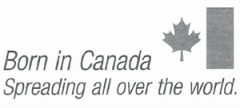 In its decision, the TTAB emphasized that “the test is not whether purchasers will be able to guess that the mark is suggesting a national flag.” Rather, the Board looked to the language provided in Examination Guide 2-07, issued by the USPTO in 2007, that stylized flag designs are not refused registration under Section 2(b), if they relate to one of the following scenarios: (1) the flag design is used to form a letter, number, or design; (2) the flag is substantially obscured by words or designs; (3) the design is not in a shape normally seen in flags; (4)he flag design appears in a color different from that normally used in the national flag; (5) significant feature is missing or changed.
In its decision, the TTAB emphasized that “the test is not whether purchasers will be able to guess that the mark is suggesting a national flag.” Rather, the Board looked to the language provided in Examination Guide 2-07, issued by the USPTO in 2007, that stylized flag designs are not refused registration under Section 2(b), if they relate to one of the following scenarios: (1) the flag design is used to form a letter, number, or design; (2) the flag is substantially obscured by words or designs; (3) the design is not in a shape normally seen in flags; (4)he flag design appears in a color different from that normally used in the national flag; (5) significant feature is missing or changed.
In reaching their decision, the Board opined that “the Canadian flag is significantly changed in applicant’s mark” and “the missing flag portion is replaced by wording.” The Board also relied on Heroes Inc. v. The Boomer Esiason Hero’s Foundation Inc., 43 USPQ2d 1193, 1197-98 (D.D.C. 1997) for the proposition that a national symbol of the U.S. (i.e., the U.S. Capitol building) is not an insignia thereof, so registration of the symbol does not violate Section 2(b). Similarly, the Board found that “while the 11-pointed maple leaf may serve as a national symbol of Canada, in the same manner that the U.S. Capitol building or the Statue of Liberty serves as a symbol of the United States,…the 11-pointed maple leaf does not qualify for protection as an ‘insignia’ under Section 2(b).” This, however, is a non precedential decision. Therefore, a different outcome may soon be reached in a similar set of facts.
[1] The Trademark Trial and Appeal Board (TTAB) is an administrative body within the USPTO that decides cases involving trademarks, such as appeals from decisions by USPTO examining attorneys denying registration of marks. TTAB three-judge panels hear hundreds of cases each year asserting that trademarks should not be registered because they are generic, descriptive, disparaging, or confusingly similar to existing marks. Such challenges to registration are initially considered by trademark examining attorneys, whose judgment may be appealed to the TTAB. Decisions of the TTAB may, in turn, be appealed to the US Court of Appeals for the Federal Circuit or a United States district court.
[2] A claim that a mark is precluded from registration under Section 2(b) of the Lanham Act can also be asserted (A) as a ground for opposition, and (B) as a ground for cancellation at any time, i.e., either before or after the challenged registration is over five years old and has acquired incontestable status.
 McCarthy Fingar has earned and built its reputation in the field of Intellectual Property Law, representing domestic and international corporations, smaller businesses and individuals alike.
McCarthy Fingar has earned and built its reputation in the field of Intellectual Property Law, representing domestic and international corporations, smaller businesses and individuals alike.
Milena S. Mishev has joined the firm as partner, bringing to McCarthy Fingar a decade of experience in trademark and unfair competition law, as well as copyright law.
As a member of our Intellectual Property group, which also includes Peter D. Aufrichtig and David A. Menken, Milena serves clients in a number of capacities, including business transactions, mergers and acquisitions, trade secret protection, and various other intellectual property and information technology matters. Many of her clients are based outside the United States, particularly in Western Europe. Milena is also qualified as a European attorney, accredited to the practice of law in Bulgaria.
Learn more about McCarthy Fingar and why so many consider us a leader in creating legal solutions.


















